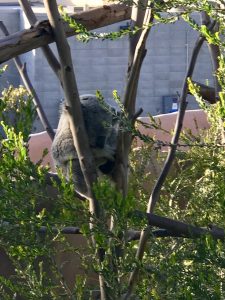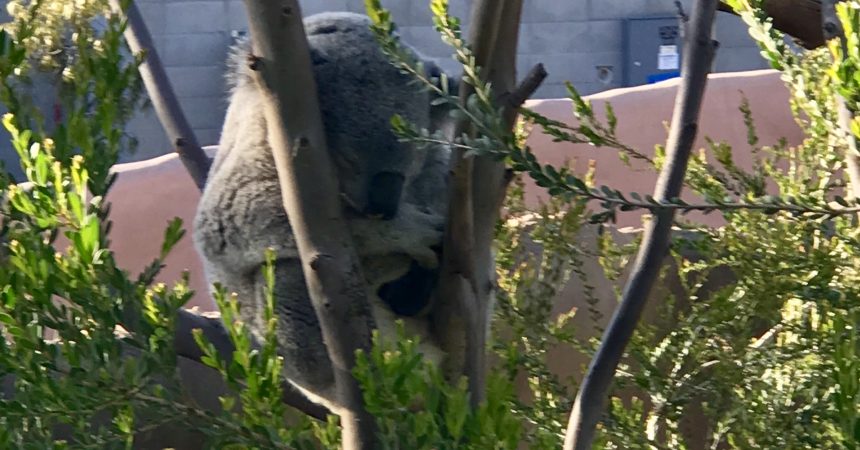Zoo InternQuest is a seven-week career exploration program for San Diego County high school juniors and seniors. Students have the unique opportunity to meet professionals working for the San Diego Zoo, Safari Park, and Institute for Conservation Research, learn about their jobs, and then blog about their experience online. Follow their adventure here on the Zoo’s website!
 Having both a passion for animals and a love for the outdoors, there is no question as to why Jennifer Tobey decided to pursue a career in animal behavior. This lead to her joining the Population Sustainability division of the San Diego Zoo for Conservation Research. Originally looking into a career as a veterinarian, something that most children dream about, Ms. Tobey soon learned that there was another place in animal research for her.
Having both a passion for animals and a love for the outdoors, there is no question as to why Jennifer Tobey decided to pursue a career in animal behavior. This lead to her joining the Population Sustainability division of the San Diego Zoo for Conservation Research. Originally looking into a career as a veterinarian, something that most children dream about, Ms. Tobey soon learned that there was another place in animal research for her.
Following high school graduation, Ms.Tobey attended Franklin and Marshall College, a small liberal arts college located in Lancaster, Pennsylvania. Here she earned her degree in Psychology and Biology, in doing so, discovering a new occupational field of animal behavior and research. She started her research with a focus on primates, Rhesus macaques specifically, conducting a studies on environmental enrichment. She hoped to one day have a career where she would be able to be with and around animals in their natural habitats, observing their movements and behaviors. After many adventures while working with acorn woodpeckers in northern California, she had the realization that she wanted to be able to work with animals while in the zoo as well as animals in the wild. After landing a job at the San Diego Zoo, Ms. Tobey spent roughly five years as a Zookeeper, working primarily with primates and large carnivores. She then spent the next fifteen years working with marsupials, studying breeding choice and joey development. Ms. Tobey now spends her days working with koalas at the Zoo and has been on numerous research trips to St. Bee’s Island, a small island off the coast of Queensland, Australia.
St. Bee’s Island serves as a place primarily for the conservation of numerous species and the studying of their behavior in a natural and safe environment. The island itself has no roads, cars, or any other sign of human existence throughout its topography. This is essential to the research done by Ms. Tobey and her fellow animal behavior specialists. After a brief PowerPoint presentation, Ms. Tobey walked us interns to a nearby viewing window where we observed numerous female koalas and she began to explain the process and precautions that go into the Koala Conservation Project hosted by the San Diego Zoo.
In an effort to preserve the natural behaviors of koalas in managed care, it was necessary to mimic the natural environment within the enclosures at the Zoo. The males and females are kept separate in order to control breeding between the koalas. Breeding is typically a lengthy process that involves a variety of tests that ensure the safety of both the animals and the potential offspring. Zookeepers keep a studbook containing information pertaining to the genetics of the animals. Once breeding season arrives, Ms. Tobey explained to us that they are able to analyze the scent communication amongst the male koalas. This process involves the swabbing of the male scent gland (located in the center of the chest) and a full analysis of the over 42 chemicals that make up the scent. While observing one of the male koalas, Ms. Tobey pointed out that the smell that we smelled was that of the koala, and it was a rather musky eucalyptus scent.
We had also had the opportunity to experience another behavior of koalas during breeding season: vocal communication. Aside from the musky scents of male koalas, they communicate to potential breeding partners by “bellowing”. Each animal has its own distinctive bellow, with different pitches or duration of sounds. We learned of the different techniques used to capture the sounds of koala bellows while on St. Bee’s Island. Using a contraption built with solar panels, car batteries, and a cell phone, a device was created in order to hear the sounds on the island in real-time. The cell phone served as the main source to transmit the sounds, sending them to a laptop from across the world. One other method of capturing vocalization was the process of searching high and low for the animals using a microphone and sound signal. We had the privilege of testing the equipment including a specialized microphone, receiver, and headset to find the “animal” (fellow intern) emitting its bellows from across the room.
It was a truly extraordinary experience meeting with Ms. Tobey, hearing her story, and exploring deeper into the career of an animal behaviorist. From trips to the Zoo, flying to Australia on numerous research trips, and teaching the public the importance of animals, Ms. Tobey is someone who demonstrates pure passion and genuine care for the animals and environment. She is someone who I deem as koala-fied to fulfill her duties at the San Diego Zoo.
Conner, Careers Team
Week Five, Winter Session 2018


